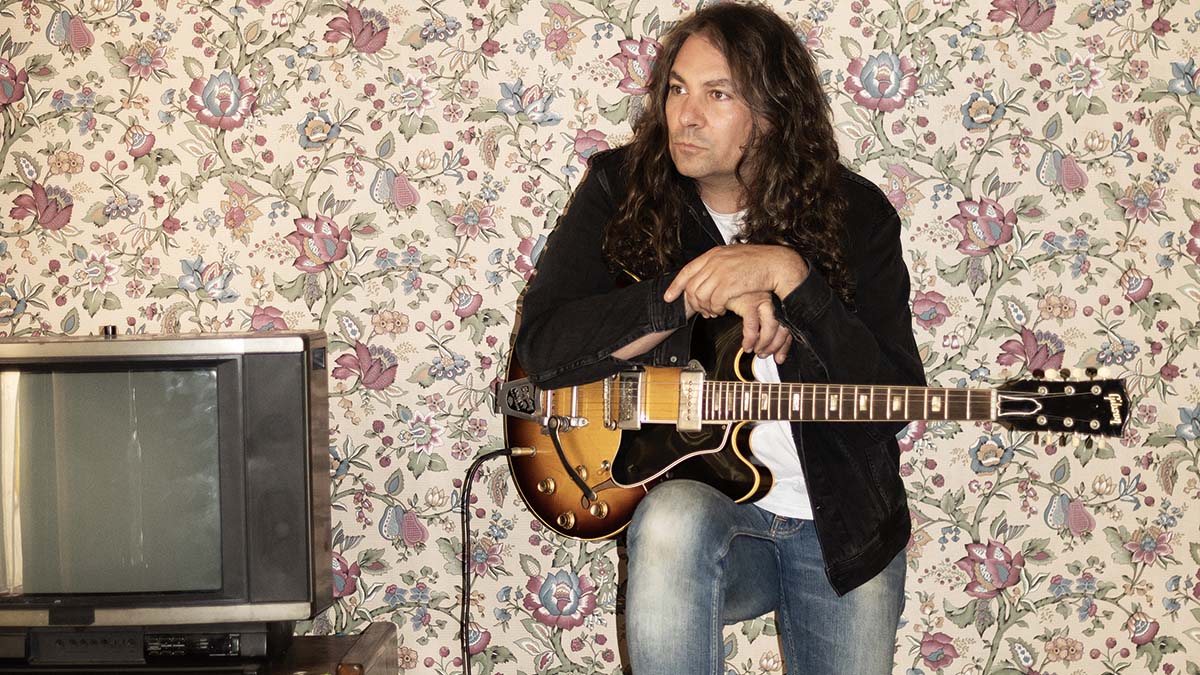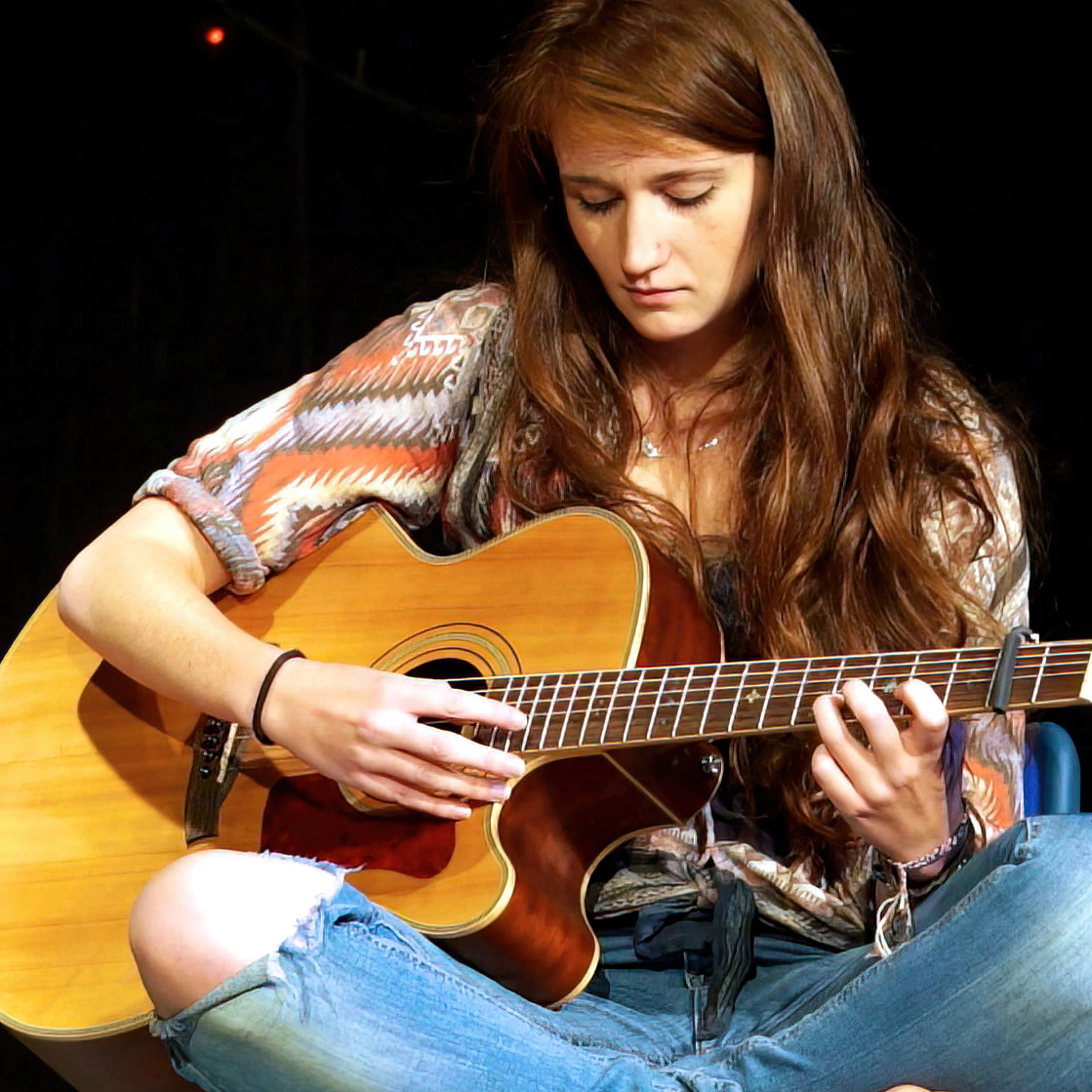The War On Drugs’ Adam Granduciel: “I’ve never strayed too far from having the amp shake the room and playing simple chords with some cool sounds”
Granduciel discusses his long courtship of the Fender Jazzmaster, finding room for experimentation and why he loves to record with a “magical guitar”

Adam Granduciel has come a long way since forming The War On Drugs in Philadelphia in 2005 – a journey that has taken his band from the margins of indie rock to mainstream success.
The first breakthrough came in 2014 with album number three, Lost in the Dream, but it was the follow-up, 2017’s A Deeper Understanding, that gave The War On Drugs a top 10 hit in the US, the UK and beyond, and confirmed Granduciel as one of the most gifted songwriters in modern rock.
Now comes a new album, I Don’t Live Here Anymore, which ranges from heartland rock to ambient psychedelia, well-considered sparsity to mammoth intensity.
“The songs come out of different guitars,” Adam says as he discusses his approach to writing and gear, experiments in sound, and evolution as a player...
Who did you love listening to when you were learning to play guitar and write songs, and who do you think really left their mark on you?
“When I was really young, I loved Pearl Jam. I loved Mike Bloomfield when I got a little older. Then Neil Young, Hendrix and also R.E.M. I got a guitar right around the time of [R.E.M.’s 1994 album] Monster, and the whole sound of that record is the AC30 with the tremolo.
“It was just so cool that basically every song had the exact same guitar sound. I think that’s when I learned what an AC30 was, so I remember that being a big record when learning to play guitar. From there it’s been a constant evolution of learning about whoever is blowing my mind!”
Get The Pick Newsletter
All the latest guitar news, interviews, lessons, reviews, deals and more, direct to your inbox!
The Vox AC30 and the tremolo are quite familiar sounds in your work. Would you say those were the things that stuck on a practical level?
“Yeah, I think just the simplicity of plugging a guitar in, turning the amp up and having a bunch of songs based around basically the same sound. The first time I played an electric guitar, it was just this amazing feeling and I never really forgot it.
“The first guitar I ever played was – by today’s standards – the cheesiest of set-ups. It was a red Washburn with active pickups, into an ART digital effects system, into a Peavey. That was the first time I ever had that feeling. I’ve never really strayed too far from having the amp shake the room and playing simple chords with some cool sounds at the other end.”
Do you still have any of that gear?
“That was my friend’s dad’s! I basically used his gear and then about two years later, I got a $99 Harmony, a Silhouette. It looks like a Jazzmaster. I still have that guitar and I still use it.”
Is it true that you’re now quite into “real” Jazzmasters?
“I didn’t get into the Jazzmaster until 2014. I had a Tele for a while, but it was my friend’s and they wanted it back. Then I had a Strat – a Japanese knock-off – that didn’t really play that great and had really low output pickups. Then I bought a 1966 Firebird when I was on tour. It was used and was a good price, but I still had to take out a credit card just to get it! Then about two years later, I got this Les Paul at a store in Philly. It was a ’72, and those were my two main guitars for about three years.
“Then, when Lost In A Dream came out, Fender sent me a Strat, a Jazzmaster and a Gretsch. I had played a Jazzmaster in the studio, but I had never owned one and I didn’t really know my way around it. I didn’t really like it at first.
“I remember having this show in Minneapolis - it was the first time I’d really used it - and I had just had a breakthrough moment. So, over time, it became one of my favourites because I could be really expressive with it once I really understood how it works.”
Do you have a go-to guitar for writing or do different songs come out of different guitars?
“The songs come out of different guitars for sure! I write mostly on electrics. One guitar that I always record with, but don’t really use live, is a ’69 SG. I don’t really tour with it because it sounds different with my pedals - it’s too inconsistent - but it’s one that I feel like a lot of songs come out of. On the album’s first song, Living Proof, if I was using a different guitar for the solo, I don’t think it would have been the same. It’s just a magical guitar in that way.”
Do you lean towards vintage guitars for writing because they seem like they already have a story in them?
“I think there is that ‘thing’. When you pick a guitar up in the store, that’s where that mindset comes. You could be in some guitar shop on Denmark Street: you have a day off, you’re inspired and you pick up an old J-50 or something, and you’re kind of led to believe that inside that guitar lies fifty of your own songs. The acoustic I used on Living Proof, I found in a store in Venice, California.
“It’s a 1963 Martin D-18 or D-12. The guy was like: ‘This guy from Northern California owned that for forty years and he built Joni Mitchell a dulcimer. She used to go to parties at his house and play that guitar.’ So I had to have it! Obviously, I have no idea if that actually happened, but it was enough to convince me that, inside of that guitar, were songs of my own.”
The associations you make with gear can be quite powerful.
“Yeah, I think that’s the fun part. Knowing about gear informs a lot of creative decisions. Many times in the studio, I’ve been inspired by a piece of gear because you know its lineage.
“On the title track, I Don’t Live Here Anymore, we’d been working on the song for a while and were spending days upon days running stuff through other things – re-amping stuff, having fun and seeing what happened. There was a JC-120 amp in the corner and something about the sound of the song was kind of like the era of that amp. So, we ended up running a lot of the sounds on that song through it.”
Your compositions often build from sparse to epic. Does that reflect a process of starting on a guitar alone at home, and then building-in the whole band?
“I think so. You want to find spots where the song can be dynamic and grow and turn into something. The way I know how to do that best is to start from a sparse, ambient space that feels calm.
“I really love when the music isn’t bombastic and in your face, and I like when it’s almost like a soundscape, but still with rock ’n’ roll sounds. Then you give it time to grow. I often build up the songs with keyboards so when I’m doing a guitar take, I can get really creative and have something to play off - almost like it’s a band in the room.”
Do you go into the studio with a view to experimenting?
“There’s three levels. There’s some stuff that you’ve already demoed a couple of times that you can maybe go in there and get a master take of – like we did with Living Proof. Then there’s the things where you have a framework for what you’re trying to do, but you can have some experimentation in there. And then there’s the things where you have no idea and you just throw paint at the wall, experiment and have fun.”
How do you know when a song is finished?
“I think the first thing I have to do is go through the process of trying out different things. Living Proof is very sparse, so you’d think that we’d recorded it like that and immediately realised that was the way it should be. But we recorded it and then I spent about a year and had this whole other idea for how it could be more ‘sonically interesting’.
I really love when the music isn’t bombastic and in your face, and I like when it’s almost like a soundscape, but still with rock ’n’ roll sounds
“I tried a million different things on it - all these layers - and we ended up just going back and decided that it was best left sparse. We went through this journey on it. That was the thing for every song, and at the end of the day, you have ten or eleven songs that all feel like they’ve gone through a similar process. They start feeding into each other and start feeling like they’re part of the same family. Then you know you’re at the finish line.”
Does playing live complete the evolution of a song for you?
“Definitely. That’s where the song becomes its own thing. The ‘real’ version of a song is the one that ebbs and flows every night depending on the audience and the room and the mood. That’s the dream – to get the songs to feel good on record, and then you start taking them to different places and learning more about them.”
- I Don’t Live Here Anymore is out now via Atlantic.
Since graduating university with a degree in English, Ellie has spent the last decade working in a variety of media, marketing and live events roles. As well as being a regular contributor to GuitarWorld.com, she currently heads up the marketing team of a mid-scale venue in the south-west of England. She started dabbling with guitars around the age of seven and has been borderline obsessed ever since. She has a particular fascination with alternate tunings, is forever hunting for the perfect slide for the smaller-handed guitarist, and derives a sadistic pleasure from bothering her drummer mates with a preference for wonky time signatures.
“I loved working with David Gilmour… but that was an uneasy collaboration”: Pete Townshend admits he’s not a natural collaborator – even with bandmates and fellow guitar heroes
“You’ve gotta lose the fuss. You grab the new guitar, you scratch it. Grab the key right away": Kiko Loureiro on why players shouldn’t be too precious about their guitars











![[from left] George Harrison with his Gretsch Country Gentleman, Norman Harris of Norman's Rare Guitars holds a gold-top Les Paul, John Fogerty with his legendary 1969 Rickenbacker](https://cdn.mos.cms.futurecdn.net/TuH3nuhn9etqjdn5sy4ntW.jpg)


